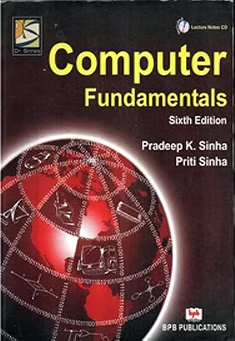
This completely new textbook reflects these recent developments while providing a comprehensive introduction to the fields of pattern recognition and machine learning. It is aimed at advanced undergraduates or first-year PhD students, as well as researchers and practitioners. No previous knowledge of pattern recognition or machine learning concepts is assumed. Familiarity with multivariate calculus and basic linear algebra is required, and some experience in the use of probabilities would be helpful though not essential as the book includes a self-contained introduction to basic probability theory.
The book is suitable for courses on machine learning, statistics, computer science, signal processing, computer vision, data mining, and bioinformatics. Extensive support is provided for course instructors, including more than 400 exercises, graded according to difficulty. Example solutions for a subset of the exercises are available from the book web site, while solutions for the remainder can be obtained by instructors from the publisher. The book is supported by a great deal of additional material, and the reader is encouraged to visit the book web site for the latest information.
What is an eBook?
An eBook, short for electronic book, is a digital version of a printed book that can be read on electronic devices such as e-readers, tablets, smartphones, or computers. eBooks are designed to provide the same reading experience as a physical book but in a digital format.
They come in various file formats, such as PDF, EPUB, MOBI, or AZW, depending on the device or software you're using to read them. eBooks can be easily downloaded, purchased from online platforms, or shared electronically. eBooks are becoming increasingly popular due to their convenience and accessibility.
They offer several advantages over traditional books, such as:
1. Portability: You can carry multiple books in a single device, making it convenient to read wherever you go.
2. Adjustable Text Size: eBooks often allow you to customize the font size and style, making it easier for people with visual impairments or reading difficulties.
3. Search and Navigation: With eBooks, you can easily search for specific terms or chapters, bookmark pages, and jump to different sections using hyperlinks.
4. Interactive Elements: Some eBooks include multimedia elements like videos, audio clips, or interactive quizzes, enhancing the reading experience.
5. Environmentally Friendly: As eBooks eliminate the need for paper and ink, they contribute to reducing the environmental impact of publishing.
Additionally, self-publishing has become more accessible with the rise of eBooks. Authors can independently publish and distribute their work without relying on traditional publishing channels.
Whether you're a reader, writer, or both, eBooks offer a convenient and versatile way to access and publish written content. I hope this gives you a good understanding of what eBooks are.
What is PDF File?
PDF stands for Portable Document Format. It is a file format that was created by Adobe Systems in the 1990s. The purpose behind PDF was to allow documents to be shared and viewed across different operating systems and devices while preserving their original formatting.
PDF files are widely used to distribute and share documents electronically. They can contain various elements, including text, images, graphics, hyperlinks, forms, and even multimedia elements. One of the key features of PDF is that it ensures that the layout and formatting of the document remain consistent, regardless of the software or device used to view it.
PDFs are commonly used for a range of purposes, such as:
1. Sharing and Publishing: PDF allows you to create and share documents that can be viewed, printed, and reproduced by others exactly as you intended them to be.
2. Forms and Contracts: PDFs can include fillable form fields, making them suitable for creating forms, contracts, applications, and other paperwork that require user input.
3. E-books and Manuals: Many e-books, guides, manuals, and technical documents are distributed in PDF format due to their ability to maintain visual integrity and compatibility.
4. Archiving and Preservation: PDFs are often used for archiving and long-term document storage as they capture and preserve the original content and formatting.
To open and view PDF files, you can use various software applications, such as Adobe Acrobat Reader, which is the most popular and widely used PDF viewer. There are also alternative PDF readers available, including web-based solutions and mobile apps, that allow you to access and read PDFs on different devices.
In summary, PDF is a versatile and widely-used file format that ensures documents can be viewed and shared across different platforms while maintaining their original layout and formatting. If you have any more questions about PDFs or need further clarification, feel free to ask!
eBook Download Links
Download Instructions:
If download link is not loading or working, try with a VPN.
Download all parts and extract all zip files into one folder.
File Password: ebookmart.net
Disclaimer
This eBook was obtained from a free source and is not hosted on the ebookmart.net website. We can safely say that it is not our responsibility. Use this file for your own purposes. Downloading copyrighted material is illegal, and all files here are for educational use only. Developers/creators made it with difficulty. We request you to buy a genuine version from the creator/developer/owner's website.
About eBookMart
Discover the ultimate destination for eBook advertising and audiobooks at eBookMart.net. Access top ads eBook services, search and download from leading audio books download sites, and find your next favorite story with ease. Enjoy home books and download talking books for a complete literary experience. Whether you're looking to get free audio books or delve into spoken books free and audio novels free, eBookMart.net has you covered.








